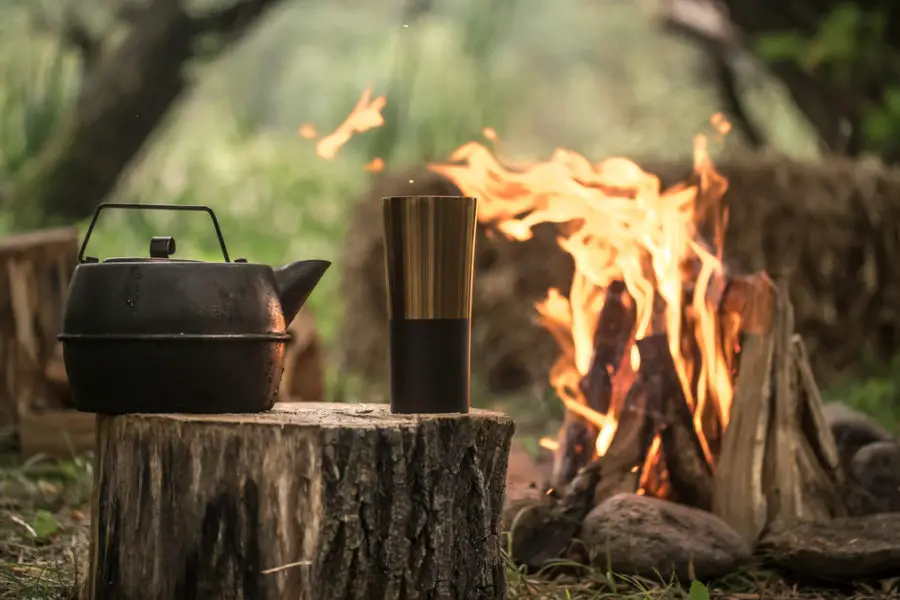Before I cover how to start a fire for beginners let me just remind you...
Lighting a fire is one of the most basic survival skills that everyone should know. But very few people would be able to light one if pushed to, especially without a lighter or matches.
Most people know how to fire up the grill or a BBQ, but don’t know how to get down to basics and start a fire from scratch.
Being able to start a fire can come in useful even just on a camping or hiking trip, but it is also a useful skill for disasters.
There are quite a few different ways to start a fire and this guide will give you the basic and simple information you need.
This guide also includes some tips on how to find the best kind of kindling, how to decide the best spot for a fire, and a few other things any beginner needs to know.
But first, let’s talk about safety. As we all know, fire is dangerous, especially if you’re not used to handling it. If you can, make sure you have others around you when building a fire and don’t let any children close to the flames. Make sure to follow all safety precautions and do your research before starting any kind of fire.
Let's look at how to start a fire for beginners...
DISCLOSURE: DisasterShelters.net is reader supported so if you buy any products featured on this site I may earn an affiliate commission. As an Amazon Associate I earn from qualifying purchases. Read my full disclosure here.

How to Start a Fire For Beginners
Place the tinder on the ground in a circular shape. On this bed of tinder, place the thicker logs or branches in a square shape.
Then, place more tinder and the kindling on top in a sort of teepee shape.
Stack more of the thicker wood around this in a kind of crosshatch. This will keep the kindling standing upright.
Don’t pack the wood too closely together as oxygen will need to get in and flow freely through for the fire to light.
How to Light a Fire
Now, your fire is ready to be lit. There are so many different things you can use to light a fire.
The most obvious options are matches or lighters. These are easy to use but are weather dependent.
If your matches or lighter get wet or if it’s windy, you’re going to have a very difficult time getting a light so try and keep them dry because if you're a beginner you're going to struggle to use any more advanced methods.
Lighting a Fire with a Lighter or Matches
If you do choose to use a match or a lighter, don’t light the fire directly.
It’s also not a good idea to just throw a lit match onto the fire. Instead, take a piece of kindling and light this with the flame from your lighter or match.
Allow it to begin the burn, blowing on it gently if it needs helping along.
Then, gently place the kindling towards the center of the fire. The fire should pick up the flame and properly get going.
Don't just grab your camping lighter and set the whole thing on fire immediately as it'll likely just burn out and make a smokey mess rather than give you a sustainable fire.
Where to Build a Fire
The most important thing to consider, before you even start looking for kindling, is choosing where to build your fire.
You should build the fire on a clear, dry surface. Even if you manage to find completely dry wood and kindling, it won’t be much use if the ground itself is damp.
The most important thing to remember is that you shouldn’t build your fire near your shelter or near any kind of trees or bushes.
Try and find a spot that is at least 6 feet away from your shelter or from trees and bushes.
Once you’re far enough away from any trees, look upwards as you should also be far away from any low hanging branches.
These branches could catch on fire and set the whole tree ablaze.
Once you have chosen your area, you need to clear it. Move away anything on the ground such as twigs, leaves, rocks, and other debris.
If you don’t move these away, they could potentially catch fire and cause the flames to spread.
Depending on the kind of area you’re in, you might also need to clear away earth. You may need to dig up some grass to make a clear, circular space.
Now that you have a clear space, collect your fuel. You need a combination of thick logs or branches, thinner branches and twigs for kindling, and leaves for tinder.
All of these need to be dry as wet or damp wood won’t light.
Basics to Remember
To help you remember what you need for a fire, try and think back to your middle school chemistry lessons. Always remember the fire triangle: fuel, heat, oxygen.
Another basic that cannot be stressed enough is safety. Building a fire might seem basic, but you really need to be sensible and keep yourself as safe as possible.
I am an independent safety and survival expert and consultant. I have over 15+ years of experience working with corporations and individuals to help identify, remediate and prepare for threats and and disasters. I help clients understand risks and blog about my thoughts and techniques at DisasterShelters.net
